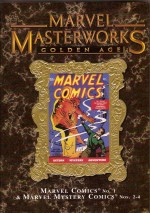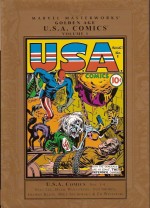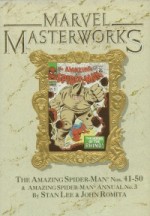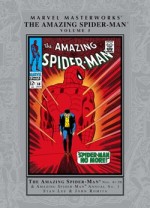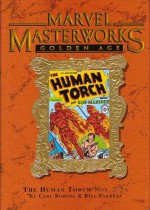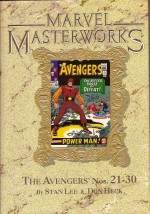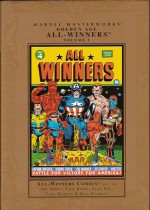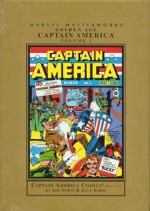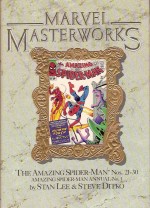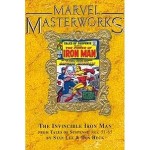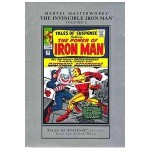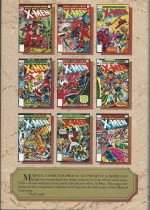
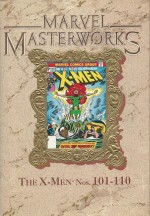
By Chris Claremont, Dave Cockrum, John Byrne & various (Marvel)
ISBN: 0-87135-628-7
In 1963 The X-Men #1 introduced Cyclops, Iceman, Angel, Marvel Girl and the Beast: very special students of Professor Charles Xavier, a cerebral, scholarly wheelchair-bound telepath dedicated to brokering peace and integration between the masses of humanity and the emergent off-shoot race of mutants dubbed Homo Superior.
After years of eccentric and spectacular adventures, the mutant misfits disappeared at the beginning of 1970 (issue #66 cover-dated March) during a sustained decline in costumed hero comics, when mystery and all things supernatural once more gripped the world’s entertainment fields.
Although their title was revived at the end of the year as a reprint vehicle, the missing mutants were reduced to guest-stars and bit-players throughout the Marvel Universe and the Beast was transformed into a monster to cash in on the horror boom, until new editor-in-chief Roy Thomas green-lighted a bold one-shot in 1975 as part of the company’s line of Giant-Sized specials…
This superb second deluxe hardcover compendium recaptures the stellar excitement of those exuberant days through X-Men #101-110 of the decidedly “All-New, All-Different†X-Men (from October 1976 to April 1978) when the merry mutants were still young, fresh and delightfully under-exposed and only beginning their inexorable rise to mega-stardom. Moreover scripter Chris Claremont & artist Dave Cockrum were on the on the verge of utterly overturning the accepted status quo of women in comics forever…
What You Need to Know: The team now consisted of old acquaintance and former foe Sean “Banshee†Cassidy, Hulk villain Wolverine, and new creations Kurt Wagner, a demonic German teleporter codenamed Nightcrawler, African weather “goddess†Ororo Monroe AKA Storm and Russian farmboy Peter Rasputin, who could transform into a living steel Colossus and joined field-commander Scott (Cyclops) Summers and Jean Grey – still labouring under the nom-de guerre Marvel Girl…
But not for much longer…
For months a long-running, blockbuster-widescreen plotline had been building. Xavier, plagued by visions of interstellar wars and alien mind-mates, was on the verge of a mental breakdown. Not coincidentally, former students Havok and Polaris had attacked the new team, apparently willing allies of a mysterious madman disguised as Cyclops’ old alias Eric the Red.
That devastating conflict then segued into a spectacular battle as remorseless robotic Sentinels returned under the hate-filled auspices of rogue Federal Agent Steven Lang and his mysterious backers of Project Armageddon. Coordinated attacks successfully snared the semi-retired Jean, Wolverine, Banshee and Xavier himself, compelling Cyclops to co-opt a space-shuttle and, with the remaining team, storm an orbiting space-station to rescue them.
Although the new X-Men were victorious, their cataclysmic clash wrecked their only means of escape and, as an immense solar flare threatened to eradicate the complex, their only chance of survival meant certain death for one X-Man…
Bracketed by a brace of team pin-ups (by Paul Ryan and Javier Saltares respectively and both inked by Al Williamson), the ten tales of stunning power and imagination contained herein begin with the debut of a landmark character in ‘Like a Phoenix from the Ashes’ (by Claremont, Cockrum & inker Frank Chiaramonte) as the shuttle spectacularly crashes back to Earth.
The X-Men had travelled in a specially shielded chamber but Marvel Girl had been compelled to pilot the vehicle unprotected through the lethal radiation storm.
As the mutants escaped the craft slowly sinking in JamaicaBay, a fantastic explosion propelled the impossibly alive Jean into the air, clad in a strange gold and green uniform and screaming that she was “Fire and Life Incarnate… Phoenix!â€
Immediately collapsing, the critically injured girl was rushed to hospital and a grim wait began.
Unable to explain her survival and too preoccupied to spare time to teach, Xavier then packs Banshee, Nightcrawler, Wolverine, Storm and Colossus off to the Irish mutant’s home in County Mayo for a vacation, blissfully unaware that Cassidy Keep has become a deadly trap for his new students…
Within the ancestral pile, Sean Cassidy’s mutant cousin Black Tom has usurped control of the manor and its incredible secrets and at Eric the Red’s behest has contrived an inescapable ambush, assisted by an old X-Men enemy.
‘Who Will Stop the Juggernaut?’ (inked by Sam Grainger) sees the neophyte heroes in well over their heads and fighting for their lives, but finds room to tell the origin of weather-witch Storm and provide an explanation for her crippling claustrophobia, before ‘The Fall of the Tower’ shockingly concludes the tale as the heroes and the Keep’s Leprechauns (no, really) unite to expel the murderous invaders.
Although bi-monthly at the time, the epic kicked into strident top gear with ‘The Gentleman’s Name is Magneto’ as the weary heroes then divert to Scotland and check up on their gun-toting biologist/housekeeper Moira MacTaggert‘s island lab: a previously secret facility containing many of the mutant menaces the X-Men have defeated.
It’s a bad move as the ever-active Eric has restored the dormant master of magnetism to full power. He’d been turned into a baby – a strangely common fate for villains in those faraway days – but was all grown up again now – and very angry…
Arriving from America, MacTaggert and Cyclops are only just in time to lead a desperate, humiliating retreat from the exultant, triumphant Magneto. Cyclops doesn’t care: he realises the entire affair has been a feint to draw the heroes away from Xavier and Jean…
He needn’t have worried. Although in ‘Phoenix Unleashed’ (inks from Bob Layton) Eric orchestrated an attack by Firelord – a cosmic flamethrower who had been a herald of Galactus much like the Silver Surfer – Jean was now fully evolved into a being of unimaginable power who readily held the fiery marauder at bay…
In the interim a long-standing mystery was solved as the vision which had haunted Xavier was revealed as a fugitive princess from a distant alien empire.
Lilandra of the Shi’ar had rebelled against her imperial brother and whilst fleeing had somehow telepathically locked onto her inter-cosmic soul-mate Xavier. As she made her circuitous way to Earth, embedded Shi’ar spy Shakari had assumed the role of Eric the Red and attempted to remove Lilandra’s potential champion long before she arrived…
During the blistering battle that followed the X-Men’s arrival, Shakari snatched up Lilandra and dragged her through a stargate to another galaxy, but now, aware that the fate of entire universe is at stake, Xavier urges his team to follow.
All Jean has to do is re-open a wormhole to the other side of creation…
A slight digression followed as overstretched artist Cockrum was given a breather by a fill-in “untold†tale of the new team featuring an attack by psychic clones of the original X-men in ‘Dark Shroud of the Past’(by Bill Mantlo, Bob Brown & Tom Sutton, but with a framing sequence from Cockrum).
The regular story resumes in a wry tribute to Star Trek as ‘Where No X-Man Has Gone Before!’ (by Claremont, Cockrum & Dan Green) finds the heroes stranded in another galaxy where they meet and are defeated by The Shi’ar Imperial Guard (an in-joke version of DC’s Legion of Super Heroes), until bold interstellar freebooters The Starjammers arrive to turn the tables and uncover a mad scheme to unmake the fabric of space-time.
Lilandra’s brother Emperor D’Ken is a certified maniac and wants to activate a cosmic artefact known alternatively as the M’Kraan Crystal and “the End of All that Is†in his quest for ultimate power. He’s also spent time on Earth in the past and has played a major role in the life of one of the X-Men …
This tale (from issue #107) was the last drawn by Cockrum for many years. He would eventually return to replace the man who replaced him.
As X-Men and Starjammers battle the Crystal’s impossibly deadly automated guardians, this final chapter sees the newly puissant Phoenix literally save all of reality in a mind-blowing display of power and skill, all whilst trapped in a truly staggering other realm before taking the heroes home, appalled and enthralled by the intoxicating, addictive nature of her own might.
The conclusion of this ambitious extended saga was drawn by John Byrne (with inks from Terry Austin) and his efforts were to become an industry bench-mark as the X-Men grew in popularity and complexity. However, even though the bravura high-octane thrills of “Armageddon Now†seemed an unrepeatable high-point, Claremont & Byrne had only started. The best was still to come…
In ‘Home Are the Heroes’ Wolverine finally began to develop a back-history and some depth of character as technological wonder Weapon Alpha attacked the recuperating team in an attempt to force Logan to rejoin the Canadian Secret Service. Renamed Vindicator he would later return with Alpha Flight – a Canadian super-team which would eventually graduate to their own eccentric high-profile series.
This splendid compilation ends rather limply with another hasty fill-in as ‘The “Xâ€-Sanction’ (illustrated by Tony DeZuniga & Cockrum), finds hired cyborg-assassin Warhawk infiltrating the mansion in search of “intel†for a mysterious, unspecified master before getting his shiny silver head handed to him…
The immortal epics compiled here are available in numerous formats (including softcover editions of the luxurious and enticing hardback under review here), but for a selection that will survive the continual re-readings of the serious, incurable fan there’s nothing to beat the sturdy and substantial full-colour feel of these sturdily Marvellous Masterwork editions.
© 1976, 1977, 1978, 1990 Marvel Entertainment Group, Inc/Marvel Characters, Inc. All rights reserved.

